Brewing tea is kind of like making a mini masterpiece.
Yeah, you could just pour hot water over tea leaves and be done with it.
But let me tell you, if you want that cup of tea to be something truly awesome, there’s a bit more magic to add.
And I’m not kidding – these extra steps totally transform how your tea tastes and how much you savor it!
In this guide, I’ve got you covered with all the essential info to help you master the art of making tea.
From selecting the right leaves to picking the perfect water and gathering the essential tools, you’ll be well-equipped to brew the finest cup of tea every single time!
History of Brewing Tea
Brewing and savoring tea is an ancient tradition with a fascinating history that spans thousands of years.
Way back in time, somewhere near the southern border of China, the art of tea began to take shape.
From 3000 to 5000 years ago, tea started its journey and has remained a beloved beverage across the world till today!
Now, if you’re new to the world of tea, where do you start?
Well, luckily for us, all those years of cultures mingling and sharing have made brewing tea a breeze.
Whether you’re into the fresh taste of green tea, the robustness of black tea, the subtlety of white tea, or the unique charm of Oolong tea (I’ll dive deeper into these shortly), this guide is your ticket to making your own fantastic cup of tea.

What Do You Need to Make Tea?
Making tea is like creating a cozy moment in a cup.
To get started, you don’t need anything too fancy, just a few simple things you probably already have in your kitchen.
Ingredients
Let’s take a closer look at the ingredients that come together to create that wonderful cup of tea.
It’s truly fascinating how something so simple can bring so much comfort and flavor.
Tea Leaves
Now, I get it, we’re all leading super busy lives, and convenience is like our best friend.
But trust me on this, using whole tea leaves instead of those little tea bags can make a world of difference.
Let me break it down for you:
Burst of Flavor: Loose leaf tea brings out the big guns when it comes to flavor.
It’s like the difference between a freshly baked cookie and one from a box – no contest.
The leaves are whole and packed with all that tasty goodness.
Your Tea, Your Way: Ever had a cup of tea that was either too strong or too weak?
With loose leaf tea, you’re the boss!
You can measure out the exact amount of tea leaves you want, which means you get to control how strong or mild your tea turns out.
No more surprises!
Teas Galore: It’s like being in a candy store, but for tea lovers.
When you go for loose leaf, you open the door to a treasure trove of tea varieties.
It’s like exploring different flavors and aromas that you might not find in those pre-bagged options.
Quality Water
When it comes to making a really great pot of tea, there’s something you might not think about that can make a big difference: the water you use.
I’ve learned that water quality is super important because, well, tea is mostly water!
So, if you want your tea to taste amazing, pay attention to the water you’re using.
Now, I wouldn’t recommend just using regular tap water.
Nope, I’ve found that using filtered, spring water, or purified water makes a big impact. Why?
Well, think of it like this: using good water is like giving your tea a beautiful canvas to paint on.
It helps bring out all those wonderful flavors from the tea leaves.
Using better water doesn’t have to be complicated either.
You can easily get filtered water from a pitcher or even a water filter on your faucet.
And if you have access to spring water or purified water, that’s even better.
The result? A cup of tea that’s smooth, rich, and allows all those tea leaves to show off their true flavors.
Sugar and Milk
For most teas, like black tea, you can add some sweetness if you like.
I’ve tried cane sugar, brown sugar, and even honey – they all work well.
If you’re into milk in your tea, that’s cool too. I’ve used regular milk, almond milk, and oat milk – they all blend nicely.
I often pour almond milk into my tea instead of regular milk, and it gives it a nutty twist that surprise my taste buds everytime.
Remember, these things are all optional.
So, if you’re sipping on a cup of tea and you wonder, “Hmm, would honey taste good in this?” – just give it a go and enjoy the journey of flavors!
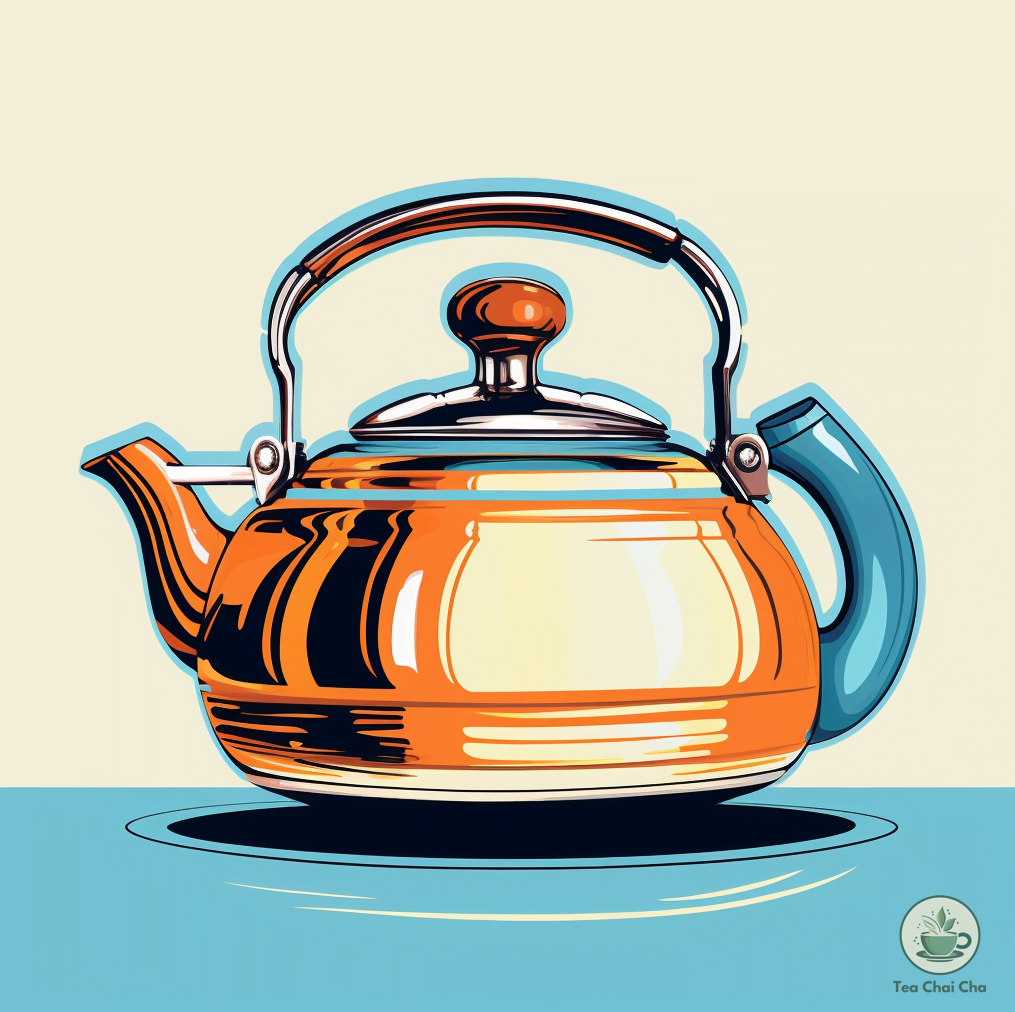
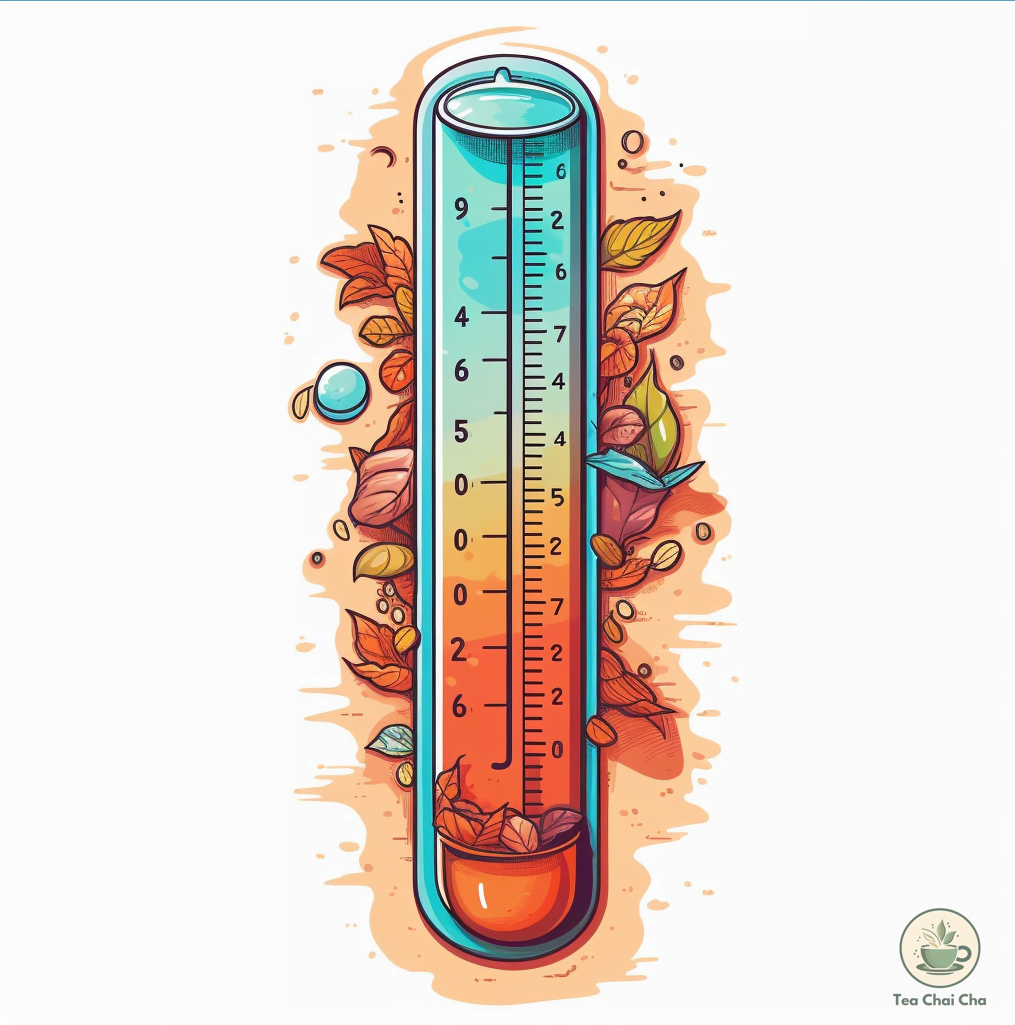
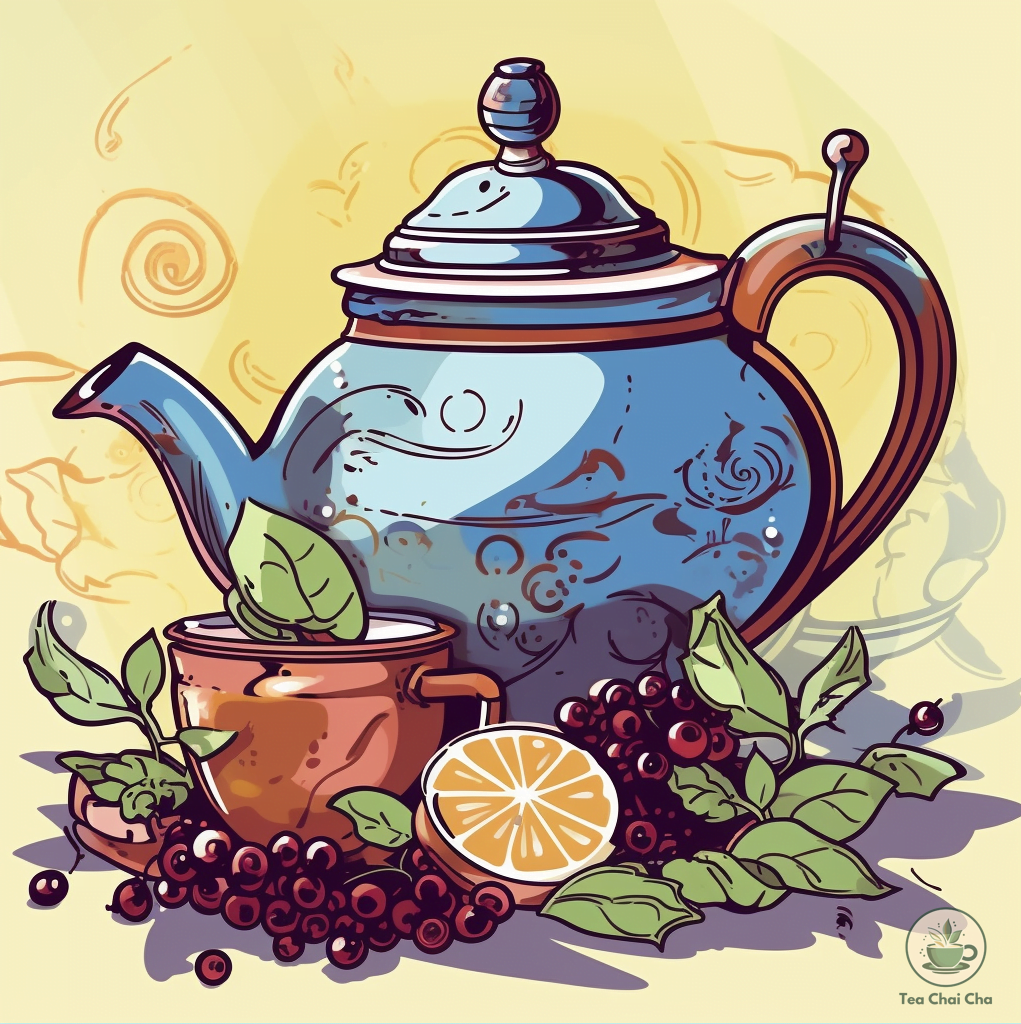
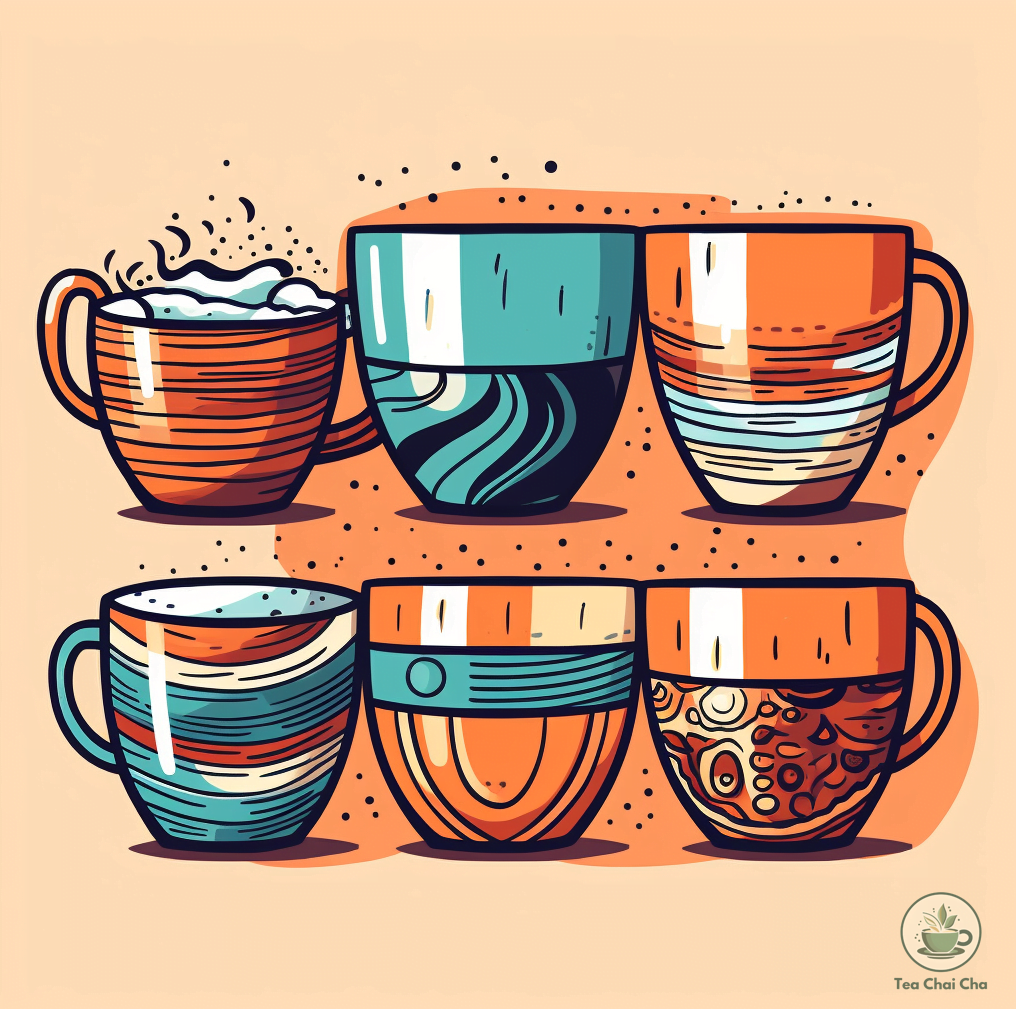
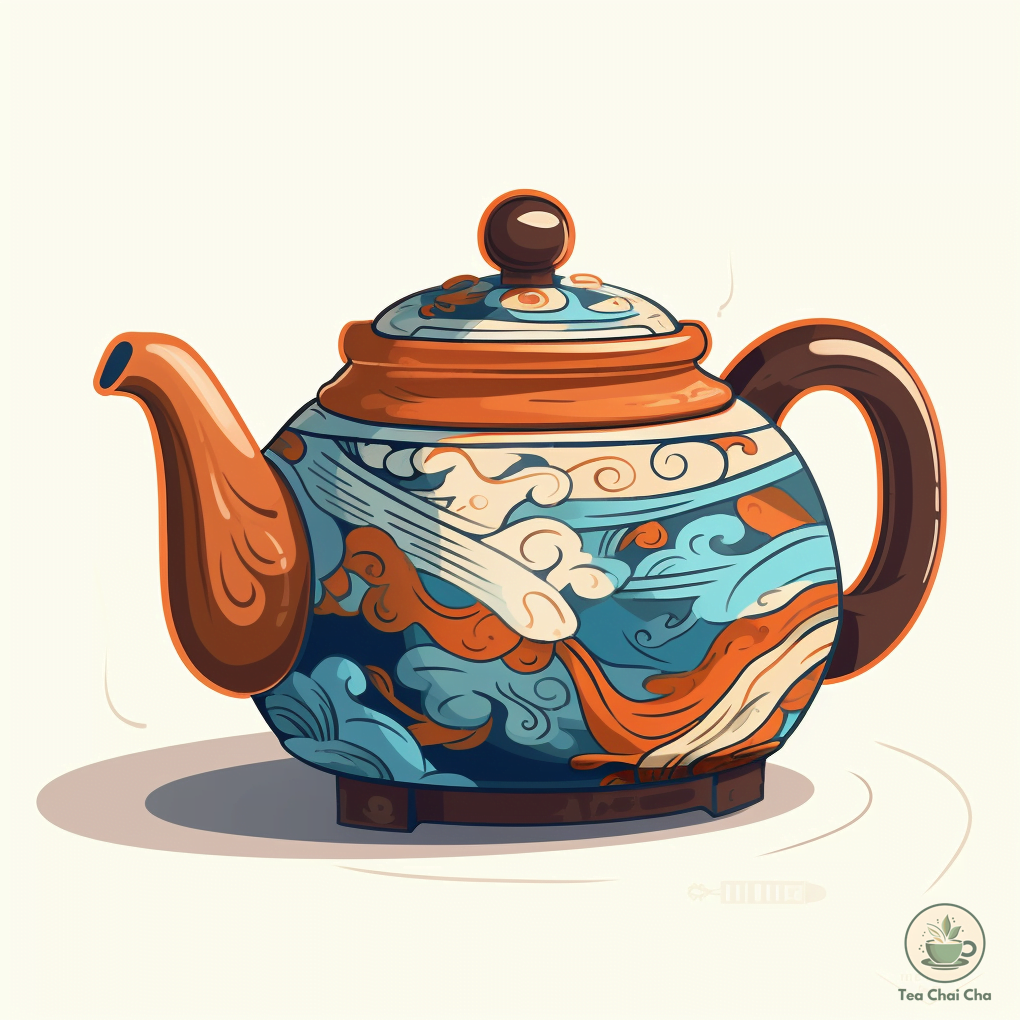
Equipment and Instruments
Here is the list (and details) of equipment and instruments that will help you out in crafting the perfect cup of tea even if it’s your first try!
Kettle
Choosing the right kettle for your tea brewing adventure is like picking the perfect partner for a dance.
Personally, I’d go for an electric tea kettle that comes with a timer and temperature settings.
These modern marvels make the whole brewing process a breeze.
But don’t sweat it if you don’t have one – a regular kettle works just fine too.
Now, if you’re more of a stove-and-pot kind of person, no worries at all.
All you need is a thermometer to check the water temperature, ensuring it’s just right for the tea you’re about to brew.
So, whether you’re team electric kettle or classic stovetop, remember that the right kettle can be your tea-brewing confidant.
Thermometer
Making tea is no less than cooking a special meal.
You know, like when you follow a recipe.
Well, tea has its own recipe too, and one of the important things is getting the water temperature just right.
Think of it like Goldilocks and the three bears.
You know how Goldilocks had to find the chair that was neither too big nor too small?
Well, tea leaves are a bit like that. They like their water not too hot and not too cold.
Some teas are like delicate flowers, and they need a gentle touch of warm water.
Others are a bit tougher and can handle hotter water.
So, this is where our trusty thermometer comes in.
This helps us make sure the water isn’t so hot that it scorches the tea leaves or so cold that they don’t open up and release their flavor.
Teapot
Now, when I’m going for green or white tea, I usually grab my standard ceramic teapot.
It’s like the reliable jeans of teapots – they just go well together.
The gentleness of these teas matches the soft touch of ceramic, creating a cozy brewing environment.
But hold on, when it comes to black tea, things get a tad different.
Black tea likes to hang out in hot water for a bit longer, really soaking up those flavors.
For this, I go for a teapot made from thicker material.
It keeps the heat in, making sure your black tea stays bold and tasty.
And let’s not forget the loose leaf situation. If you’re into those beautiful, unfurling tea leaves dancing in your cup, a strainer is a must.
Personally, I swear by my stainless steel strainer.
It’s a trusty sidekick, never altering the taste of my tea, just letting the flavors shine.
Scale and Spoons
Having a scale and a spoon for measuring tea might not be necessary, but they can really help make your tea-making experience more precise and enjoyable.
And let me tell you, there’s something oddly satisfying about using a spoon to scoop up the tea leaves.
You scoop, you level it off, and you drop those leaves into your teapot or infuser.
It’s a small step, but it adds a touch of ritual to your tea-making routine.
Plus, you know you’re getting the right amount of tea for that perfect infusion.
Cups and Saucers
When it comes to brewing tea the usual way, you can pick your own cups, saucers, and spoons.
If you want your tea to cool down fast, go for shorter and wider cups.
But if you want to keep it hot for a good while, then taller and narrower cups are the way to go.
Gaiwan Tea Cups
You’ve probably seen those fancy Chinese porcelain cups with the cute little lids on top.
They’re called gaiwans, and they’re like the tea world’s version of a royal cup!
You won’t believe what they’re used for – brewing tea right in the cup itself!
And that little lid?
It’s not just for show – you use it to cool down the hot tea a bit and to keep those tea leaves from ending up in your mouth when you take a sip.
Chinese Yixing
Chinese Yixing teapots are super cool!
They look really charming and are made from this special reddish-brown clay that hasn’t been fully finished.
This clay is full of tiny holes, like a sponge.
These little holes can make your tea taste even better!
But wait, there’s a tiny thing to remember.
Since these teapots are super friendly with flavors, they don’t like sharing.
So, if you can, it’s a good idea to stick to one kind of tea in each teapot.
Here’s a little tip from me: if you want to switch to a different tea in your Yixing teapot, you can give it a quick rinse with hot water.
This helps it let go of the previous tea’s taste and get ready for a new adventure with a new tea.
Tea Temperature and Steeping Time
Did you know that different types of tea need a little special treatment to bring out their best flavors?
Each tea has its own favorite way to be brewed.
First off, we’re looking for that full-flavored sip of tea that really hits the spot.
To get there, we’ve got some magic numbers to remember: water temperature and steep time.
These two things are like the secret ingredients to making your tea taste just right.
Now, when it comes to the water temperature, here’s a little cheat-sheet for you:
| Tea Types | Water Temperature | Steep Time |
|---|---|---|
| Green Tea | 180°F | 2 minutes |
| White Tea | 180°F | 4 minutes |
| Black Tea | 210°F | 4 minutes |
| Oolong Tea | 180°F | 2 minutes |
| Pue-erh Tea | 200°F | 3-5 minutes |
| Herbal Tea | 210°F | 5-10 minutes |
How to Make Tea – Basic Steps
Here are the basic steps:
Step 1: Gather Your Supplies
First things first, gather everything you need.
You’ll need a teapot, a tea infuser or tea bags, loose tea leaves, boiling water, a cup, and your favorite mug.
Step 2: Choose Your Tea
Now comes the fun part! Pick out the type of tea you’re in the mood for.
Maybe it’s classic black tea, soothing chamomile, or zesty green tea.
Step 3: Boil the Water
Fill up your kettle with fresh water and put it on the stove.
Give the water a little pep talk, “You got this! Get nice and hot!”
Wait for the water to start bubbling and dancing around.
Step 4: Warm Your Teapot
While the water is heating up, give your teapot a warm-up session.
Just pour a little hot water into the teapot, swirl it around, and then pour it out.
This preps the teapot for the main event.
Step 5: Add Tea Leaves
If you’re using loose tea leaves, add them to the teapot or the tea infuser.
If you’re using tea bags, drop one into your cup.
Step 6: Pour in Hot Water
By now, your water should be ready to go – it’s all excited and bubbly.
Remember to check the water temperature using a thermometer.
Carefully pour the hot water into the teapot or cup.
The tea leaves are going to take a delightful hot bath!
Step 7: Let It Steep
Let the tea steep, which means it’s sitting in the hot water and getting all flavorful.
The longer it steeps, the stronger the taste.
Step 8: Remove Tea Leaves
If you’re using loose tea leaves, gently remove the infuser or strain the tea into your cup.
If you’re using tea bags, just give them a little squeeze to release all the goodness.
Step 9: Add Extras (Optional)
Now, it’s time to customize your tea.
Add a bit of honey for sweetness or a slice of lemon for a tangy twist.
Make it your own – it’s your tea party, after all!
Step 10: Enjoy!
Finally, the moment of truth!
Take a deep breath, hold your warm cup of tea close, and take a sip. There’s nothing quite like it!
How to Make Different Types of Tea
The steps I mentioned above are some basic ones.
However, you can customize the preparation of your fav tea (I’m going to talk about it below) using some basic notes.
Here, I am going to share some thoughts on brewing different types of teas:

How to Make Black Tea
To make a good cup of black tea, start by boiling water in a kettle.
While waiting for the water to boil, choose your favorite black tea leaves.
I always find it fun to explore different flavors and blends!
Once the water is boiling, pour it into a teapot or a cup with a tea infuser.
Add one teaspoon of black tea leaves per cup of water you’re using.
If you like it stronger, go for an extra teaspoon.
Now, comes the waiting game – let the tea steep for about 3 to 5 minutes.
This is when the magic happens and the flavors infuse into the water.
I sometimes peek into the teapot to see the color change – watching a little show!
After the steeping time, remove the tea leaves.
If you want, add a touch of sugar, honey, or milk.
I love how milk gives it a creamy twist.
Tips
- Use freshly boiled water, as it helps extract the flavors better.
- Experiment with steeping times to find your preferred strength.
- Don’t forget to explore different black tea varieties – each has a unique taste.
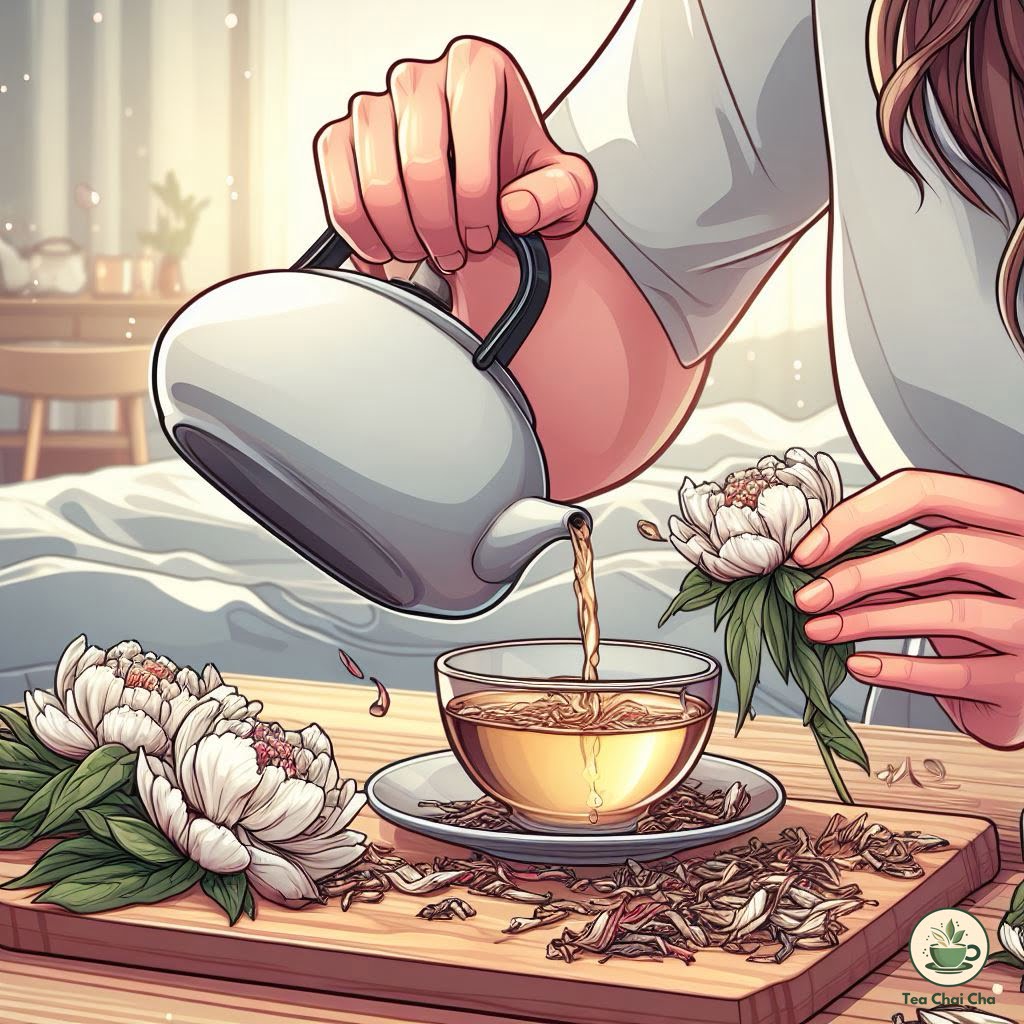
How to Make White Tea
White tea, how delicate and subtle it is!
To brew this beauty, start by heating water to about 175°F (80°C).
Be gentle with the water, just like you would with white tea.
Take your white tea leaves and place them in a teapot or infuser.
Pour the hot water over the leaves and let them dance their way to flavor heaven for around 2 to 4 minutes.
Once the time is up, remove the leaves so they don’t get bitter.
Pour yourself a cup and take a moment to savor the delicate aroma and taste.
If you’re into zen moments, white tea is your go-to.
Tips
- Use water that’s not too hot to preserve the delicate flavors.
- Handle the leaves gently – they’re like fragile little clouds.
- Embrace the simplicity of white tea; it’s all about the subtle beauty.
Related – How to Make White Tea – Hot and Iced Recipes, Variations

How to Make Green Tea
Making a refreshing cup of green tea is a breeze!
Start by heating water, but this time, don’t let it come to a full boil.
Aim for around 160°F to 180°F (70°C to 80°C).
Grab your green tea leaves or tea bag and place them in your cup or teapot.
Pour the warm water over them and let them steep for about 1 to 3 minutes.
Green tea is like a quick chat – you don’t want to overstay your welcome!
After the steeping time, remove the leaves or tea bag.
If you like, add a slice of lemon or a touch of honey to enhance the flavors.
Sip and enjoy the simple pleasure of green tea – it’s gives a gentle wake-up call for your senses.
Tips
- Use warm water to avoid bitterness.
- Short steeping time keeps the taste bright and lively.
- Experiment with adding lemon or a hint of sweetness for a twist.
Related – How to Make Green Tea Recipe + 14 Green Tea Drinks

How to Make Oolong Tea
Ah, oolong tea – the in-between of green and black tea.
To make this cup, start by boiling water and letting it cool for a minute or two.
Oolong tea likes to play in water around 190°F to 200°F (88°C to 93°C).
Take your oolong tea leaves and put them in your teapot or cup.
Pour the hot (but not scalding) water over them and let the tea leaves unfurl their flavor for about 3 to 5 minutes.
(Its taste lingers between the sweetness of black tea and the earthiness of green tea.)
After steeping, remove the leaves to prevent over-extraction.
Take a moment to inhale the aroma and appreciate the tea’s complexity before taking that satisfying sip.
Tips
- Let the water cool slightly to prevent bitterness.
- Longer steeping time lets you explore oolong’s layered taste.
- Embrace the mystery; oolong tea is all about surprises.
Read More – How to Make Oolong Tea – 15 Types and Benefits
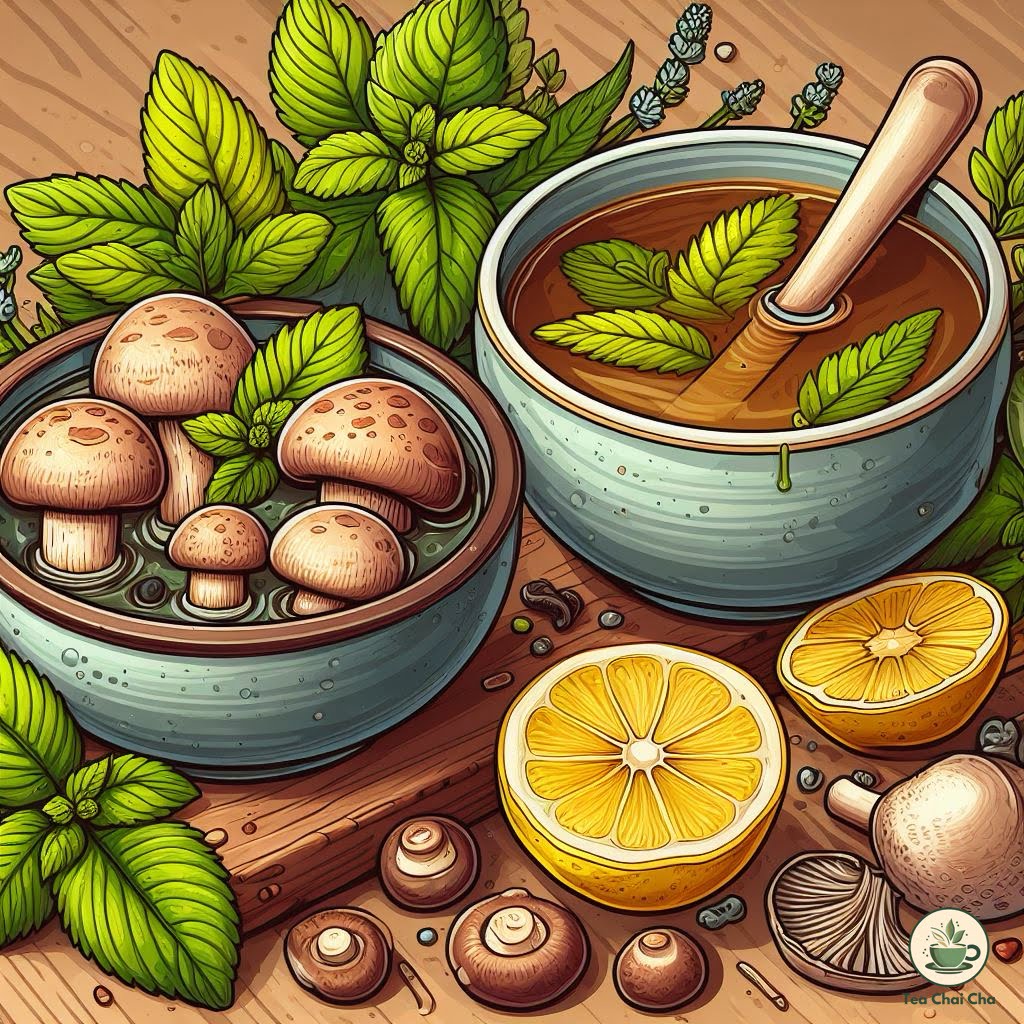
How to Make Herbal Tea
Making herbal tea is like crafting a soothing potion.
Start by boiling water as you would for black tea.
Choose your favorite herbal blend – it could be chamomile, peppermint, or any other fragrant herbs that tickle your fancy.
Once the water is ready, pour it over your chosen herbs in a cup or teapot.
Let them steep for around 5 to 7 minutes.
After steeping, strain out the herbs or remove the tea bag.
If you like, add a drizzle of honey for extra comfort.
Take a slow, mindful sip and let the herbal goodness envelop you.
Tips
- Boil water just like you would for black tea.
- Longer steeping time extracts the herbal flavors fully.
- Personalize with honey or a slice of citrus for extra flavor.
Related – How to Make Herbal Tea – 22 Herbal Teas and Recipes

How to Make Fruit Tea
Start by boiling water in your kettle, similar to making black tea.
While the water heats up, choose your preferred tea base.
Black tea, green tea, or even a mild white tea work well as a foundation for fruit tea.
Once the water is hot, place your chosen tea leaves in a teapot or tea infuser.
Pour the hot water over the tea leaves and let them steep for the recommended time based on the tea type you’re using.
This step gives you a strong and flavorful base.
Next, add your selected combination of dried fruits and herbs.
The tea base sets the stage, and the fruits and herbs add layers of taste and aroma.
Let everything steep together for about 5 to 7 minutes.
After steeping, strain out the tea leaves, fruits, and herbs, or remove the infuser.
If you desire a touch of sweetness, consider adding honey or a sprinkle of sugar.
Take a sip and let the delightful blend of tea and fruity goodness transport you to a serene garden.
Tips
- Begin with boiled water as for black tea.
- Steep the tea base for the appropriate time based on the tea type.
- Allow the fruits and herbs to steep with the tea for a flavorful combination.
Related – How to Make Fruit Tea – Complete Guide!
Iced Tea or Hot Tea
I like both iced tea and hot tea, but it depends on the weather and how I’m feeling.
When it’s hot outside, there’s nothing like a refreshing glass of iced tea.
It’s cold, slightly sweet, and really quenches my thirst.
I often enjoy it with a slice of lemon or a few ice cubes.
On the other hand, when it’s chilly or I want something cozy, hot tea is the way to go.
The warmth spreads through me, making me feel all snug inside.
There are so many flavors to choose from, like chamomile, green tea, or a classic black tea.
Adding a spoonful of honey or a dash of milk can make it even more comforting.
So, whether it’s a hot day or a cold one, I enjoy both iced tea and hot tea.
They each have their own special way of making me feel good.

How to Make Iced Tea
Making iced tea is easy and refreshing and if you are like me you’ll love the experience.
Here’s a simple way to do it:
Ingredients
- Tea bags (black tea, green tea, herbal tea, or your choice)
- Water
- Sweetener (sugar, honey, or another preferred option)
- Lemon slices or mint leaves (optional)
Instructions
Boil Water: Start by boiling water. You’ll need around 2 cups of water for every tea bag.
Add Tea Bags: Place the tea bags in a heat-safe pitcher or container.
If you like strong tea, use one tea bag for every cup of water.
If you prefer milder tea, you can adjust the number of tea bags accordingly.
Pour Hot Water: Once the water boils, carefully pour it over the tea bags in the pitcher.
Steep: Let the tea bags steep in the hot water for about 3 to 5 minutes.
This allows the flavor to develop. If you leave the bags in for too long, the tea might become bitter.
Remove Tea Bags: After steeping, gently remove the tea bags from the pitcher and discard them.
Add Sweetener: While the tea is still warm, add sweetener to taste.
Start with a small amount and adjust according to your preference.
Stir well until the sweetener dissolves.
Cooling: Allow the tea to cool down to room temperature.
You can leave it on the countertop for a while or put it in the refrigerator for faster cooling.
Add Ice: Once the tea is cool, add ice cubes to a glass. Pour the cooled tea over the ice.
Garnish (Optional): For extra flavor and a nice presentation, you can add lemon slices, mint leaves, or other garnishes.
Enjoy: Stir the iced tea, and it’s ready to be enjoyed!
Sip on your homemade iced tea on a hot day and feel refreshed.
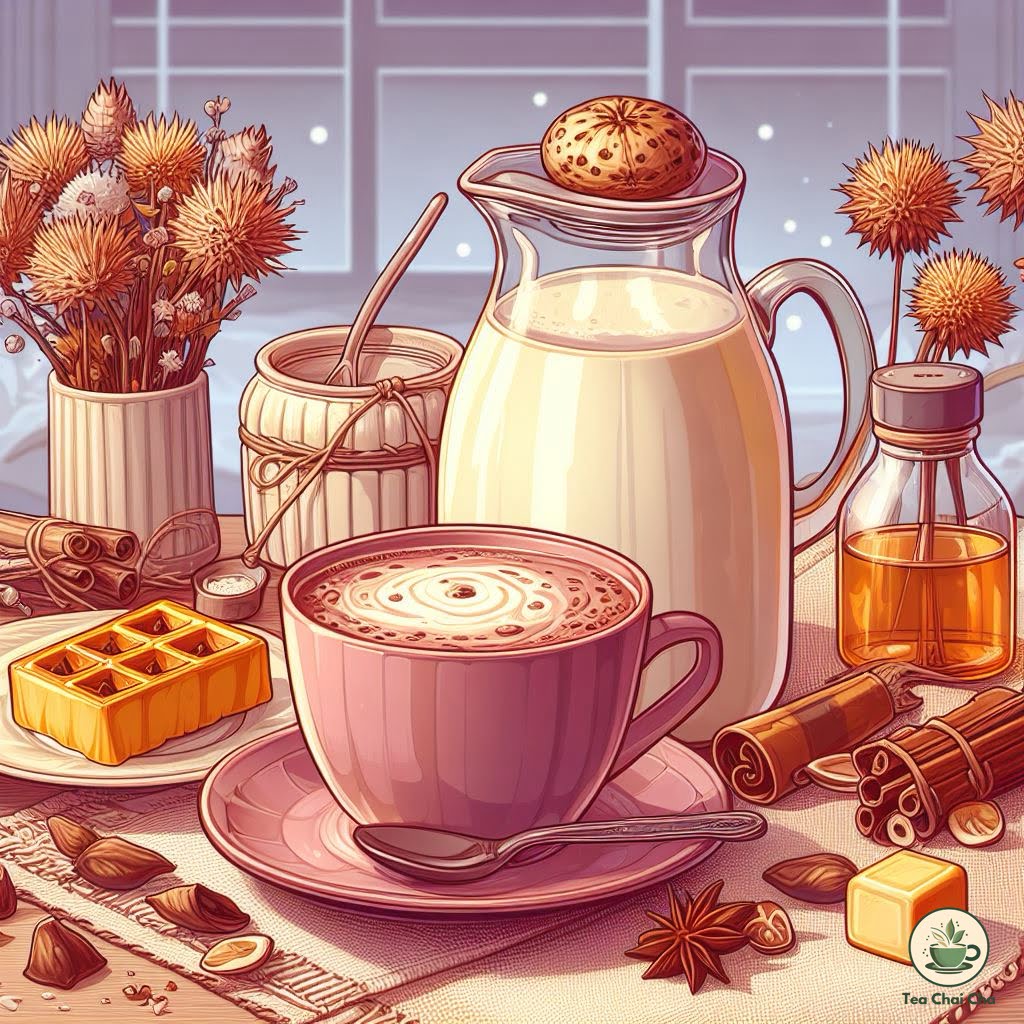
How to Make Hot Tea (Milk Tea)
Here’s how you can make a simple and delicious cup of hot milk tea (you can make classic tea without milk if that’s what you prefer):
Ingredients
- Black tea leaves or tea bags
- Water
- Milk (dairy or non-dairy like almond, soy, or oat milk)
- Sugar or sweetener (optional)
- Spices (like cinnamon or cardamom, optional)
Instructions
Boil Water: Start by boiling water. You’ll need about 1 cup of water for each cup of tea.
Add Tea Leaves or Bags: Place the tea leaves or tea bags in a teapot or a cup.
If using loose tea leaves, use about 1 teaspoon per cup.
Pour Hot Water: Once the water boils, pour it over the tea leaves or tea bags.
Let it steep for about 3 to 5 minutes.
Adjust the steeping time based on how strong you like your tea.
Remove Tea Leaves or Bags: After steeping, remove the tea leaves or bags.
If you’re using a teapot, pour the steeped tea into your cup.
Add Sweetener: If you prefer your tea sweetened, add sugar or your preferred sweetener to taste.
Stir well until it’s dissolved.
Heat Milk: In a separate pot, heat the milk until it’s warm but not boiling.
You’ll need about half a cup of milk for each cup of tea.
Mix Tea and Milk: Slowly pour the warmed milk into your cup of steeped tea while stirring.
You can adjust the milk-to-tea ratio based on how creamy you want your milk tea.
Add Spices (Optional): If you like, you can add a pinch of spices like cinnamon, cardamom, or nutmeg to enhance the flavor of your milk tea.
Enjoy: Your hot milk tea is ready to be enjoyed!
Take a sip and savor the comforting blend of tea and milk.
How to Make Cold Brew Tea
Cold brewing tea is a simple and refreshing method to make a chilled tea without using hot water. Here’s how you can do it:
Ingredients
- Loose tea leaves or tea bags
- Cold water
- Optional: Sweetener, lemon slices, herbs, or fruits for flavor
Instructions
Choose Tea: Pick your favorite tea for cold brewing.
Black tea, green tea, herbal tea, and fruit teas work well.
Avoid using teas that are very fine, as they might become cloudy in cold water.
Measure Tea: If you’re using loose tea leaves, measure around 1 to 2 teaspoons of tea per cup of water.
Adjust the amount based on your taste preference and the strength you want.
Combine Tea and Water: In a pitcher or container, add the tea leaves or tea bags.
Pour cold water over the tea.
Use a ratio of about 1 teaspoon of tea per 1 cup of cold water.
Mix and Refrigerate: Gently stir the tea leaves or tea bags in the cold water to ensure they’re fully submerged.
Cover the container and place it in the refrigerator.
Let the tea steep for an extended period, usually around 6 to 12 hours.
This slow steeping process extracts a smoother and less bitter flavor.
Strain and Serve: After steeping, remove the tea leaves or tea bags from the cold brew.
If using loose leaves, you can strain the tea through a fine mesh strainer or a tea infuser.
Your cold brew tea is now ready to enjoy.
Add Flavor (Optional): If you like, you can enhance the cold brew tea with sweeteners, lemon slices, herbs like mint, or even pieces of fruit.
Add these ingredients before or after steeping, depending on the flavor intensity you desire.
Serve and Enjoy: Pour the cold brew tea over ice cubes and enjoy a refreshing, milder tea with less bitterness compared to hot-brewed tea.
Cold brewing is a forgiving method that allows you to experiment with flavors and ratios.
Feel free to adjust the tea-to-water ratio and steeping time to achieve your preferred strength and taste.
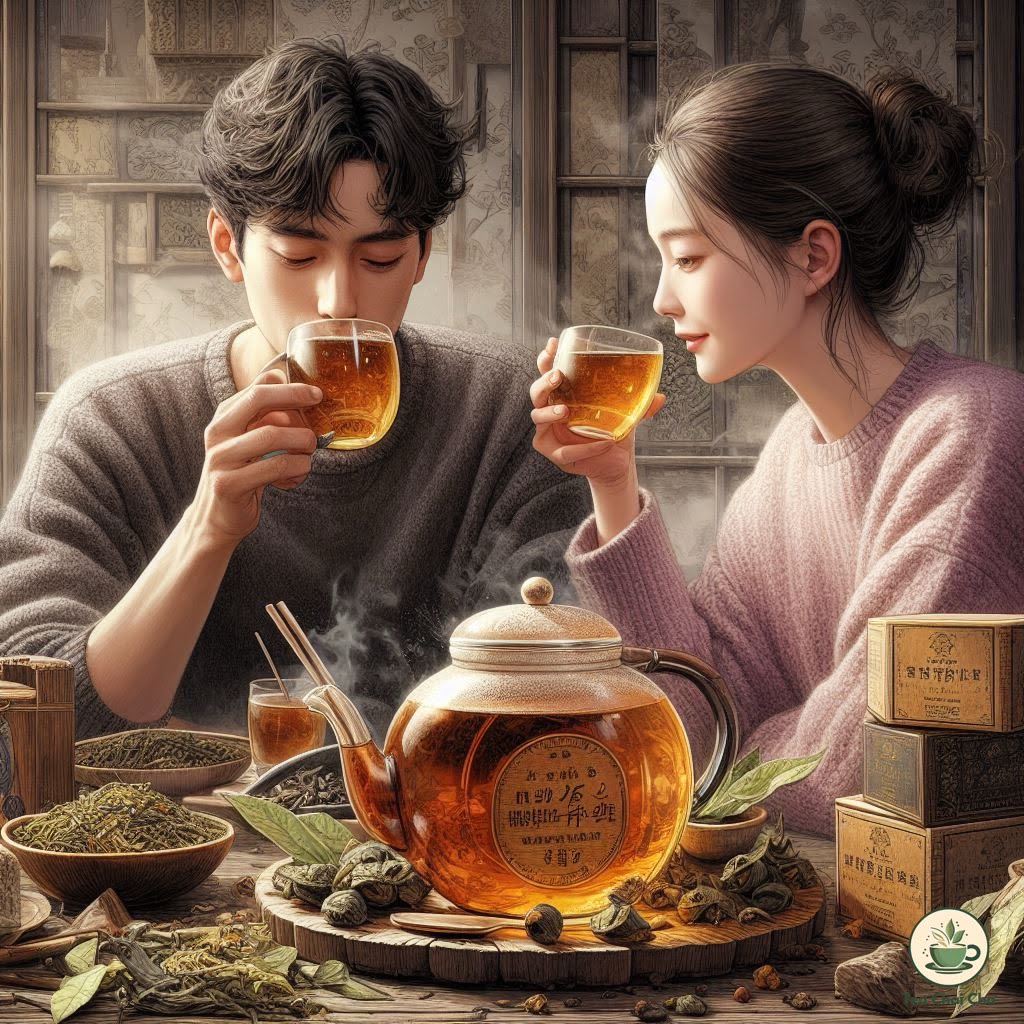
10 Etiquettes to Serve Tea to Guests
When you have guests over, serving tea can create a warm and welcoming atmosphere.
Here are 10 simple etiquettes that can make you an expert host:
1. Greeting with a Smile
As your guests arrive, greet them with a genuine smile.
Make them feel comfortable and appreciated right from the start.
2. Offer a Choice
Once your guests are settled, offer them a choice of tea.
You can ask, “Would you like black tea, green tea, or herbal tea?”
This shows that you care about their preferences.
3. Use a Tea Tray
When you bring out the tea, use a tray to carry the teapot, cups, saucers, and any additional items like milk and sugar.
This makes the presentation neat and organized.
4. Pouring the Tea
When pouring tea, start with your guest of honor if there is one.
Hold the teapot handle and use a tea cozy or towel to keep the pot warm.
Pour gently to avoid spills.
5. Milk and Sugar
Offer milk and sugar separately.
Ask, “Would you like milk or sugar in your tea?”
If they want both, remember the order: milk before pouring the tea and sugar after.
Its the British way, but you can follow the European way (add tea first, then milk) if that’s suitable.
6. Stirring and Sipping
Provide small spoons for stirring.
Guests should stir gently without clinking the spoon against the cup.
Encourage them to take small sips to avoid burning their mouths.
7. Conversation and Enjoyment
While sipping tea, engage in light conversation.
Ask about their day, interests, or any topic that encourages a comfortable and friendly atmosphere.
8. Refreshment Timing
Be attentive to your guests’ tea levels.
Offer refills, but don’t insist if they decline.
Respect their pace of drinking.
9. Light Snacks
If you have light snacks like biscuits or cookies, you can offer them alongside the tea.
It adds to the hospitality without overwhelming your guests.
10. Thanking and Farewell
When your guests are ready to leave, thank them for their company.
Express that you enjoyed their visit and invite them to return for tea again.
Conclusion
So, here’s the deal. Making tea isn’t just about pouring water over leaves. It’s about adding your care and creativity.
It’s turning a simple act into a wonderful experience.
So next time you make a cup, remember these steps (save this post for later use!). You’ll see – your taste buds will thank you!
Related
Frequently Asked Questions (FAQs)
What does a perfect pot of tea look like?
A perfect pot of tea boasts balanced flavors from proper steeping time, water temperature, and tea amount. It shouldn’t be overly bitter, astringent, or weak, aligning with your taste.
Why is my tea bitter?
Tea bitterness results from over steeping or hot water. Each tea has its steeping time and temp, so follow guidelines. Too many leaves can also lead to bitterness.
Why is green tea so bitter?
Green tea bitterness comes from high heat or prolonged steeping. It needs cooler water (160-180°F, 1-3 min) due to its delicate nature. Tea type and quality matter too.
Why is my tea flavorless?
Tea may lack flavor due to insufficient leaves or steeping time. Also, cool water for black or herbal teas affects taste. Use the right leaves, steeping times, and temps.
Why can’t I use tap water to make tea?
Tap water varies in quality, affecting tea taste. Minerals and chemicals present can alter flavor. Filtered or bottled water provides a cleaner base for tea.
Can I use the microwave to make tea?
Microwaving water for tea is possible but not ideal. Uneven heating affects flavor. Opt for kettle or stove heating to ensure consistent temperature.
Which tea should I start with if I want to get into tea?
Begin with mild, versatile teas like black or green tea. They offer approachable flavors, helping you grasp tea basics. Gradually explore herbal, oolong, white, and more.
